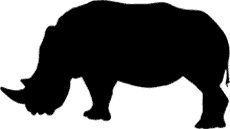“Home of the African Elephant” Crowned by Mount Kilimanjaro, Africa's highest peak, the Amboseli National Parks is one of Kenya's most popular parks. The name "Amboseli" comes from a Maasai word meaning "salty dust", and it is one of the best places in Africa to view large herds of elephants up close. Nature lovers can explore five different habitats here ranging from the dried-up bed of Lake Amboseli, wetlands with sulphur springs, the savannah, and woodlands. They can also visit the local Maasai community who live around the park and experience their authentic culture.
 Best Time To Go June to September
Best Time To Go June to September High Season December to March & July to October
High Season December to March & July to October  Size 390.6 sq km
Size 390.6 sq km Pros:
Excellent wildlife viewing with four of the Big Five present (no rhino)
Outstanding elephant sightings
Views of Kilimanjaro on clear days
Excellent birding, especially waterbirds in swamp habitat
Good range of accommodation catering to different budgets and styles
Cons:
The park gets very busy, especially in the high season
Big cats are relatively hard to spot
Although Amboseli can be visited at any time of year it is recommended to go in the dry months, which are from June to October and January to February. The short rains peak in November and the long rains in April and May – these months are not recommended for wildlife viewing. During these wet months, animals tend to spread out and are less inclined to come to predictable water sources.
Views of Kilimanjaro are hit-and-miss, but chances are best early morning and late afternoon in the Wet season months from November to May, when the sky is clear of dust.
Amboseli is one of Kenya’s most popular parks and offers great wildlife viewing. The park is famous for its elephants, but most big safari animals can be spotted here. Black Rhino has, unfortunately, become extinct, but four of the other Big Five are present. The plains support an abundance of large herbivores including Wildebeest, Burchell's Zebra, grants Masai giraffe. Thomson's gazelle and Impalag can usually be found browsing from stands of acacia trees.
Conditions in Amboseli NP are hot and dry. Drought is common in this area, although when it rains it typically falls as short, heavy showers. During the day expect average temperatures of around 28°C/82°F and 15°C/59°F at night. Early morning activities, such as game drives, require warm clothing. Peak rainfall periods are in April and November. The ‘long rains’ usually fall from mid-March to mid-May while the ‘short rains’ are from late October to mid-December.

Giraffe

Elephant

Zebra

Hippo

Leopard

Buffalo

Hyena

Lion

White Rhino

Black Rhino

Wildebeest

Wild Dog

Giraffe

Elephant

Zebra

Hippo

Leopard

Buffalo

Hyena

Lion

White Rhino

Black Rhino

Wildebeest

Wild Dog
Amboseli can be visited at any time of year especially during dry months, which are from June to October and January to February. The short rains peak in November and the long rains in April and May – these months are not recommended for wildlife viewing. During these wet months, animals tend to spread out and are less inclined to come to a predictable water source
Mt. Kilimanjaro view chances are best early morning and late afternoon in the Wet season months from November to May, when the sky is clear of dust.
 Best Time June to September & to January to February
Best Time June to September & to January to February
 High Season December to March & July to October
High Season December to March & July to October Low Season April to June
Low Season April to June Best Weather June to September (Minimal Rainfall)
Best Weather June to September (Minimal Rainfall)  Worst Weather April
Worst Weather April Although Amboseli can be visited at any time of year it is recommended to go in the dry months, which are from June to October and January to February. The short rains peak in November and the long rains in April and May – these months are not recommended for wildlife viewing. During these wet months, animals tend to spread out and are less inclined to come to predictable water sources.
These are the coolest months and typically have bright, sunny days. It is very dry with practically no rain.
The Wet season is marked by the ‘short rains’ followed by the ‘long rains’. January and February is a drier interlude that splits the Wet seasons. Driving can be a challenge in April and May when rains cause road conditions to deteriorate.
Crime issues are not a problem in any of the developed parks and reserves in Kenya. Amboseli is no exception, and in our opinion, is a very safe destination for visitors. However, if you are traveling independently around Kenya, you should exercise caution in cities and towns between parks.
Before a trip to Kenya, seek advice about required vaccinations from your doctor. For most people, malaria is the major concern. It is advisable to bring antimalarials, and to take other preventative measures such as covering up in the evening, and applying mosquito repellent with at least 30% DEET. Spraying the room every evening before bedtime is a good idea if you aren’t sleeping under a mosquito net. The risk of malaria is worst at the heights of the rainy seasons – from April to May and October to November.
Conditions in Amboseli NP are hot and dry. Drought is common in this area, although when it rains it typically falls as short, heavy showers. During the day expect average temperatures of around 28°C/82°F and 15°C/59°F at night. Early morning activities, such as game drives, require warm clothing. Peak rainfall periods are in April and November. The ‘long rains’ usually fall from mid-March to mid-May while the ‘short rains’ are from late October to mid-December.